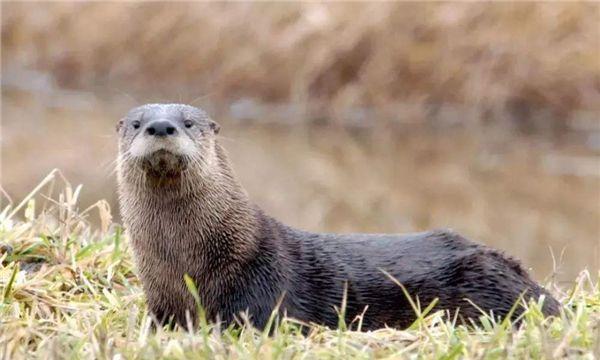Lontra canadensis
IUCN
LCBasic Information
Scientific classification
- name:Lontra canadensis
- Scientific Name:Lontra canadensis,North American River Otter,Canadian otter, northern otter
- Outline:Carnivora
- Family:Spinopoda Mustelidae Lurinae A.Otter
Vital signs
- length:100-130cm
- Weight:5-14kg
- lifetime:10-15, up to 27 years in captivity
Feature
The body is streamlined, with a sturdy torso and short legs, webbed toes, and a long tail.
Distribution and Habitat
Canada (Alberta, British Columbia, Labrador, Manitoba, New Brunswick, Newfoundland, Northwest Territories, Nova Scotia, Nunavut, Ontario, Prince Edward Island - extinct in the region, Quebec, Saskatchewan, Yukon); United States (Alabama, Alaska, Arizona, Arkansas, California, Colorado, Connecticut, Delaware, District of Columbia, Florida, District of Georgia, Hawaii, Idaho, Illinois, Indiana, Iowa, Kansas, Kentucky, Louisiana, Maine, Maryland, Massachusetts, Michigan, Minnesota, Mississippi, Missouri, Montana, Nebraska, Nevada, New Hampshire, New Jersey, New Mexico - Possibly Extinct, New York, North Carolina, North Dakota, Ohio, Oklahoma, Oregon, Pennsylvania, Rhode Island, South Carolina, South Dakota, Tennessee, Texas, Utah, Vermont, Virginia, Washington, West Virginia, Wisconsin, Wyoming).
North American river otters nest on land and forage in aquatic environments such as lakes, rivers, wetlands, swamps, and even the open ocean.
Appearance
The North American otter is 100-130 cm long, with a tail length of 30-45 cm, which generally accounts for 30-40% of the entire body, and weighs 5-14 kg. The North American otter has a small round head, short and powerful legs, and a long beard. Male otters are much larger than female otters. The North American otter has a streamlined body, a sturdy body and short legs, webbed toes, and a long tail. The body hair is generally dark brown, and the throat is silver-gray. The North American otter is a good swimmer, but can also walk on land for a long time, and often uses its belly to slide quickly on the snow or ice. The North American otter's nasal cavity can automatically close underwater, and the hair is soft and dense to prevent freezing. These characteristics are adapted to life underwater.
Details
North American River Otter (scientific name: Lontra canadensis) is also known as North American River Otter in foreign languages. There are 7 subspecies.

North American River Otters generally live in pairs, and sometimes form family units. It is a highly active animal. As long as it is not sleeping, it will always remain active, such as chasing, sliding, swimming, jumping, and wrestling. Therefore, the North American otter is a very popular animal in the zoo. However, adult otters are very aggressive to humans and are not suitable for keeping as pets.
The North American otter generally mates once a year, mostly in late winter and early spring, and the male otter mates with multiple female otters. The gestation period is 2 months and the weaning period is 3 months. Each litter has 1-6 pups, usually only 2-3. The average lifespan of an otter in the wild is about 10-15 years, and can reach 27 years in captivity.
Listed in the 2013 Red List of Endangered Species of the World Conservation Union (IUCN) ver 3.1 - Low Concern (LC).
Protect wild animals and stop eating game.
Maintaining ecological balance is everyone's responsibility!








